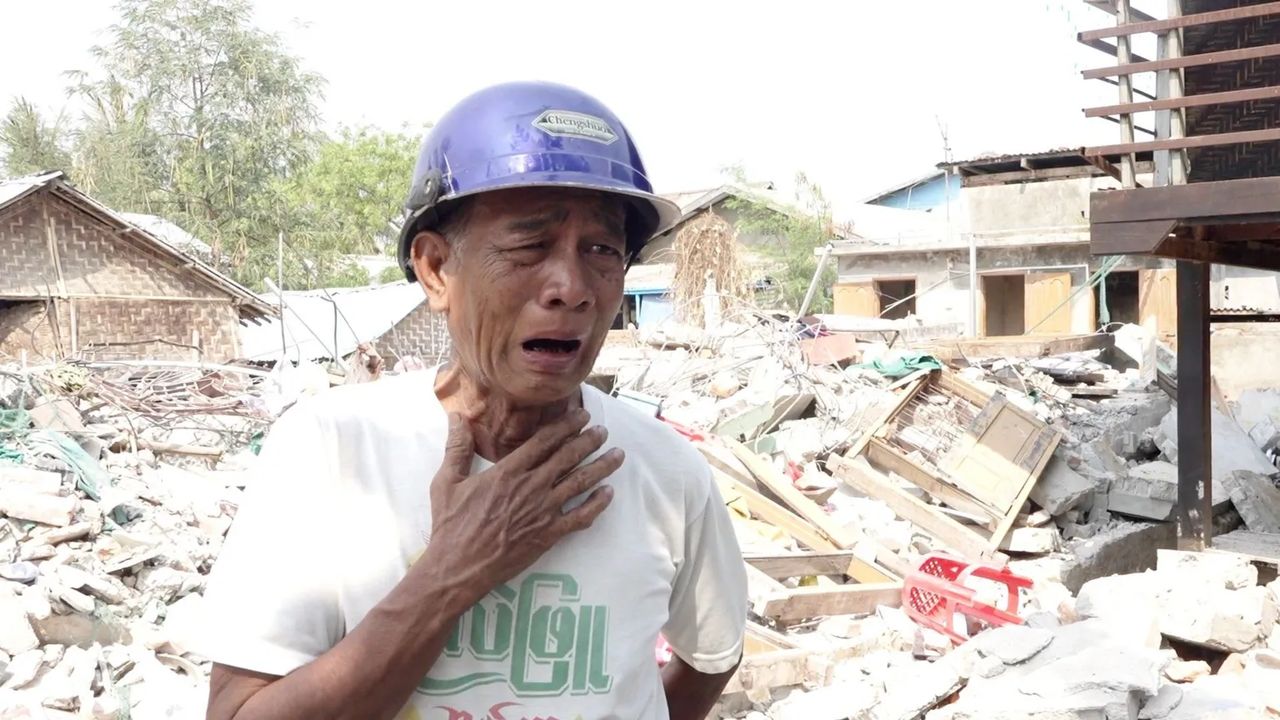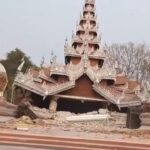In the aftermath of the devastating 7.7-magnitude earthquake that struck central Myanmar on March 28, the town of Kyaukse, located approximately 40 kilometers south of Mandalay, has been profoundly affected.
Among the numerous tragedies, the collapse of the Bright Kids Private School stands out, resulting in the deaths of at least 12 children and a teacher.
The earthquake, which has claimed over 2,000 lives nationwide, caused the preschool to crumble during the children’s afternoon nap. Rescue efforts were immediate, with volunteers and locals working tirelessly to retrieve survivors and the deceased from the debris. Despite their efforts, the disaster has left families and the community in deep mourning.
Heartbroken parents have been seen calling out their children’s names amidst the rubble, a poignant testament to the profound grief enveloping Kyaukse. The scene is marked by scattered children’s belongings—backpacks, toys, and school supplies—amidst the ruins of the school, highlighting the innocence lost in this calamity.

One such grieving family is that of 71-year-old Kywe Nyein, who lost his five-year-old granddaughter, Thet Hter San, in the collapse. Her mother was having lunch when the earthquake struck and rushed to the school, only to find it reduced to rubble. After hours of searching, they recovered Thet Hter San’s body, a small solace amidst their immense loss.
The community’s anguish is compounded by the scale of the disaster. While the school reports 12 children and a teacher perished, locals fear the number could be higher, with some estimating at least 40 fatalities from the collapse. This discrepancy underscores the chaos and difficulty in assessing the full extent of the tragedy.
Rescue operations have been challenging due to limited resources and the overwhelming scale of destruction. Volunteers, lacking adequate equipment, have been digging through debris with their bare hands, desperately searching for survivors. The absence of formal rescue teams has left communities relying on their own resilience and solidarity in these dire times.
The earthquake has not only caused immediate loss of life but has also left survivors without basic necessities. Many are without food, water, and shelter, as fears of aftershocks keep them from returning to damaged homes. The United Nations and aid organizations have emphasized the urgent need for clean water, sanitation, and temporary shelters to prevent further humanitarian crises.
The disaster’s impact extends beyond Kyaukse, with significant damage reported in Mandalay and other regions. Hospitals are overwhelmed with casualties, and infrastructure damage has hampered relief efforts. The military government’s response has faced criticism, with locals expressing frustration over the lack of timely assistance and resources.
As the nation observes a week of mourning, the focus remains on search and rescue operations, providing aid to survivors, and beginning the long process of rebuilding. The resilience of the Myanmar people is evident as communities come together to support one another, even as they grapple with profound grief and uncertainty about the future.

International aid has started to trickle in, with organizations mobilizing resources to assist in relief efforts. However, access to affected areas remains a challenge due to damaged infrastructure and ongoing security concerns. The global community continues to call for unimpeded access for humanitarian aid to ensure timely and effective assistance to those in need.
The tragedy at the Bright Kids Private School in Kyaukse serves as a heartbreaking reminder of the earthquake’s devastating impact, particularly on the most vulnerable. As families mourn their irreplaceable losses, the collective hope is for a coordinated and compassionate response to aid in healing and recovery.







